
The Plant and Equipment Wellness Way was designed to quickly create Operational Excellence success. You can only get the Plant Wellness Way from LRS Operational Excellence Consultants.
[Read more…]Your Reliability Engineering Professional Development Site
Author of Plant Maintenance, Maintenance Management, and Life Cycle Asset Management.
This author's archive lists contributions of articles and episodes.
by Mike Sondalini Leave a Comment

The Plant and Equipment Wellness Way was designed to quickly create Operational Excellence success. You can only get the Plant Wellness Way from LRS Operational Excellence Consultants.
[Read more…]by Mike Sondalini Leave a Comment

A certain Operations Manager started inventing production KPIs in order to measure reliability from a production perspective. So he got together his colleagues and they came up with this formula.
Reliability = Good Production / (Net Production Hours + Nominal Speed)
When asked to define ‘good production’, I was told that it was the saleable production remaining after losses such as speed losses, first time quality, downtime, change overs, etc. were taken off.
After 3 years of running TPM (Total Productive Maintenance) across 3 factories, they made the following observations. The mean time between failure (MTBF) of equipment in all 3 factories increased. The production volumes increased. However the Reliability remained flat. How can this be? Something is not right. Is the above formula incorrect?
Is there a better way to calculate Reliability from a production perspective?
[Read more…]by Mike Sondalini Leave a Comment

To help select which work orders to do first in situations of resource shortage many CMMS provide calculations for maintenance work order priority. Deciding maintenance work priority is a risk decision. The presence of risk totally changes the way to allocate maintenance job priority if you want to compare situations equally1. When you work with risk you cannot use a linear priority scale. Using linear priority ranking gives the wrong order of importance for doing maintenance work.
[Read more…]
A tutorial explaining the Physics of Failure method applied to regularly failing roller bearings in a dewatering press. After three years of exhaustive efforts to solve the cause of the bearing failures it was decided to test Physics of Failure Analysis with the aim of finding a lasting answer.
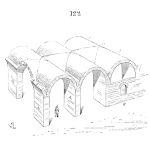
Predictive Maintenance strategy uses condition monitoring techniques to observe plant and equipment health. Based on the equipment’s condition you plan, schedule and perform any necessary maintenance before the breakdown. To use Predictive Maintenance most successfully you must set-up and run your condition monitoring program correctly all the time—predictive maintenance is a never ending strategy that if not done right at every step will still lead to plant and equipment failures. Learn about the many ways your predictive maintenance program will fail and you won’t even know about it!
Keywords: predictive maintenance, condition monitoring, Con Mon
[Read more…]
The likelihood of component failure reflects the operational risk present. By reducing the likelihood of component failure to zero, zero operational risk is achieved.
Operational Risk is a mathematical formula, with variables that can be manipulated and controlled to reach the desired outcome. Below are three equations related to operational risk that you can use to change your future.
[Read more…]by Mike Sondalini Leave a Comment
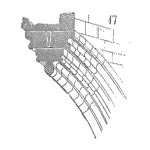
Now SFAIRP is the Criterion to Judge If You have Sufficiently Controlled Your Workplace Hazards
Risk Assessment Used to be Based on ALARP to Decide if Workplace Hazards were Sufficiently Controlled, But Today You Need to Use SFAIRP
The original OHS risk assessment process, procedures and techniques identified hazards; assessed risk; established risk controls; reduced and managed risks to ‘as low as reasonably practicable’ (ALARP), but safety laws are now changing to ‘so far as is reasonably practicable’ (SFAIRP) [Read more…]
by Mike Sondalini Leave a Comment
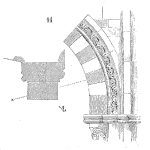
You will find example process diagram layouts with the most effective flowchart templates to use, what to include in them so that the flow chart drives business results and personal performance (and you will be surprised at how easy they are to create). With the right layout and the inclusion of ACE 3T (Target-Tolerance-Test) quality assurance standards your process flowcharts and procedures will drive business and workplace performance. First it is necessary to layout your flowcharts so it is totally clear what must happen in a process or procedure, who is responsible to make it happen, and how their performance will be measured.
[Read more…]by Mike Sondalini Leave a Comment

To not have a problem you must prevent its creation. Once a problem exists you can never stop it repeating until all its roots are eliminated. Doing Root Cause Analysis (RCA) on a problem to try and prevent it has a miniscule chance of working because you can never find all the roots of its cause. The roots you do not eliminate will let the problem grow again.
[Read more…]by Mike Sondalini Leave a Comment

THE BUSINESS RISK EQUATION SHOWS YOU HOW MUCH YOU WILL LOSE FROM ANY FAILURE EVENT
THE COMPLETE BUSINESS RISK EQUATION EXPLAINS WHAT INFLUENCES YOUR CHANCE OF SUCCESS IN BUSINESS
—
Risk = Consequence x Opportunity x Uncertainty of the Opportunity
One of the most important business equations of them all is the full form of the business risk equation shown above.
by Mike Sondalini Leave a Comment
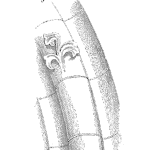
How to use Condition Monitoring Reports to do Maintenance Planning of the Maintenance Work Activities that will prevent Equipment Failure
This article by Peter Brown, a vibration analysis condition monitoring expert, explains how to address and action condition monitoring reports from your condition monitoring service provider.
Abstract
Maintenance Planning From Condition Monitoring Reports. Having developed the finest condition monitoring programme that provides all the data required to predict plant behaviour it is now necessary to convert that data into information and to plan it in for action by the maintenance team at a time that is compatible with operations.
[Read more…]by Mike Sondalini Leave a Comment

Which critical spare parts you carry in the maintenance store always revolve around how much risk your company is willing to bear. It is purely a risk based business decision. Look at the economics of the risk decisions available and go with the biggest chance of success.
—
I have a question about critical spare parts determination that I always have a problem with. I do not know if this topic is included in the online preventive maintenance training I and my team of engineers are doing with you, that’s why I am asking the question.
How can I determine which are the critical spare parts that we have to keep on stock?

Here is a story of multimillion dollar aircraft failures that could have been prevented by spending $25. But no one did the risk analysis right using a financial model of the consequences. It’s also the story of why RCM is a poor maintenance strategy selection methodology. RCM will send you to financial disaster and you won’t even know it. Learn how to decide when doing preventive maintenance is far better for business success than doing the on-condition maintenance recommended by business-destroying RCM analysis.
[Read more…]by Mike Sondalini Leave a Comment

Let a Plant Wellness Way EAM System-of-Reliability halve your Annual Maintenance Costs
The Plant Wellness Way is business paradigm to create world-class performance and results in any operation by the correct selection and use of engineering, operating, maintenance, and reliability strategy and practices.
The six IONICS steps are used to develop lifecycle asset management, reliability improvement and maintenance management strategy and activities needed for endless operational excellence. Simply identify where you are in the above process map, come in at that point, and then continue on through the process to the point where your answers are available.
[Read more…]by Mike Sondalini Leave a Comment
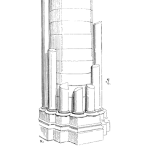
You must select OHS risk management mitigations appropriate to a job safety hazard using a formal method that delivers safe work practices.
Each task safety control will need to be developed, assessed for suitability, and recorded so it’s clear what the plan is, and how it is to be done.
In the end, there is a practically designed, completely resourced, fully scheduled, and totally sure safe work practice procedure approved for use.
[Read more…]